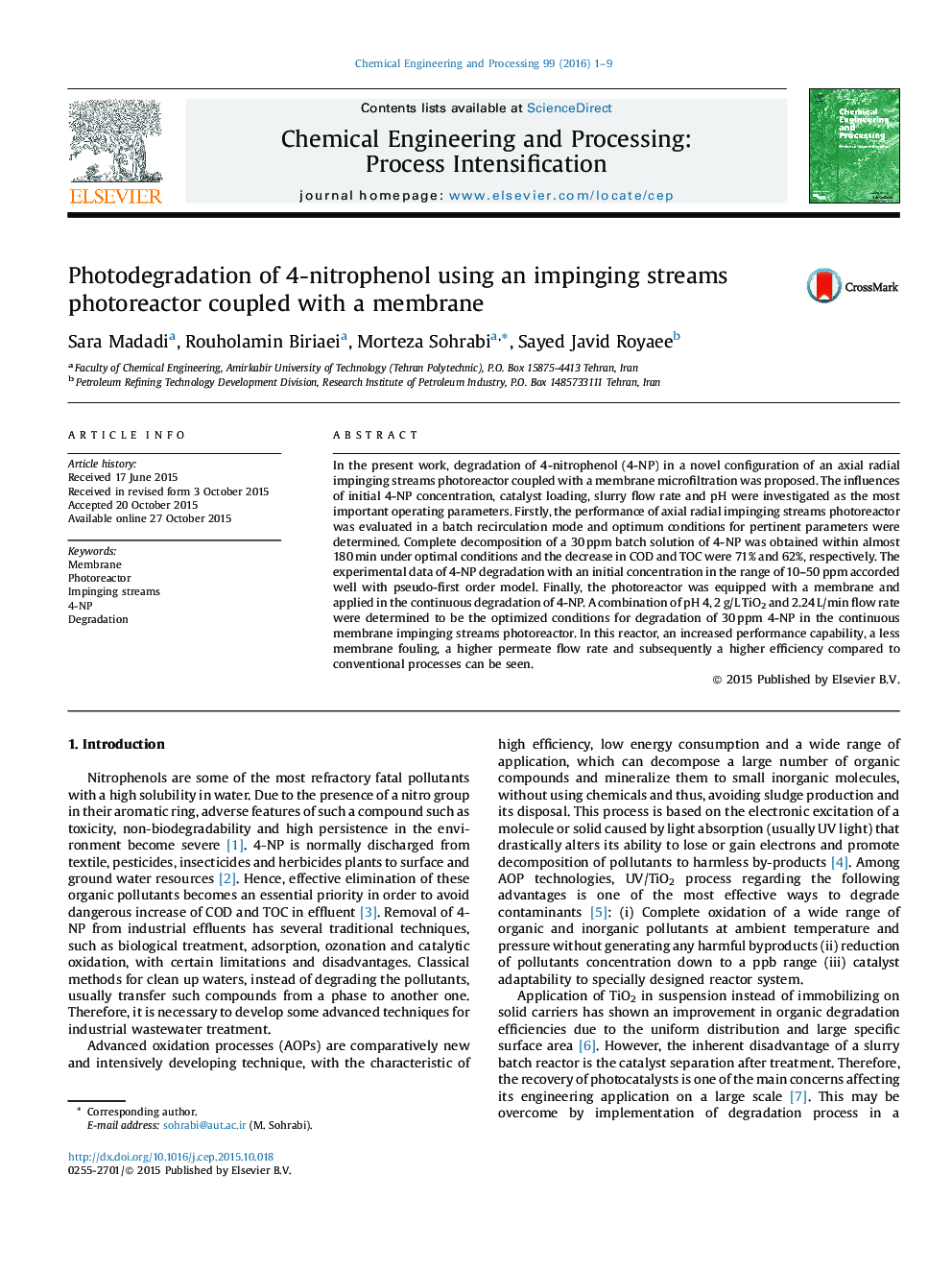| Article ID | Journal | Published Year | Pages | File Type |
|---|---|---|---|---|
| 7089725 | Chemical Engineering and Processing: Process Intensification | 2016 | 9 Pages |
Abstract
In the present work, degradation of 4-nitrophenol (4-NP) in a novel configuration of an axial radial impinging streams photoreactor coupled with a membrane microfiltration was proposed. The influences of initial 4-NP concentration, catalyst loading, slurry flow rate and pH were investigated as the most important operating parameters. Firstly, the performance of axial radial impinging streams photoreactor was evaluated in a batch recirculation mode and optimum conditions for pertinent parameters were determined. Complete decomposition of a 30Â ppm batch solution of 4-NP was obtained within almost 180Â min under optimal conditions and the decrease in COD and TOC were 71% and 62%, respectively. The experimental data of 4-NP degradation with an initial concentration in the range of 10-50Â ppm accorded well with pseudo-first order model. Finally, the photoreactor was equipped with a membrane and applied in the continuous degradation of 4-NP. A combination of pH 4, 2Â g/L TiO2 and 2.24Â L/min flow rate were determined to be the optimized conditions for degradation of 30Â ppm 4-NP in the continuous membrane impinging streams photoreactor. In this reactor, an increased performance capability, a less membrane fouling, a higher permeate flow rate and subsequently a higher efficiency compared to conventional processes can be seen.
Related Topics
Physical Sciences and Engineering
Chemical Engineering
Process Chemistry and Technology
Authors
Sara Madadi, Rouholamin Biriaei, Morteza Sohrabi, Sayed Javid Royaee,
